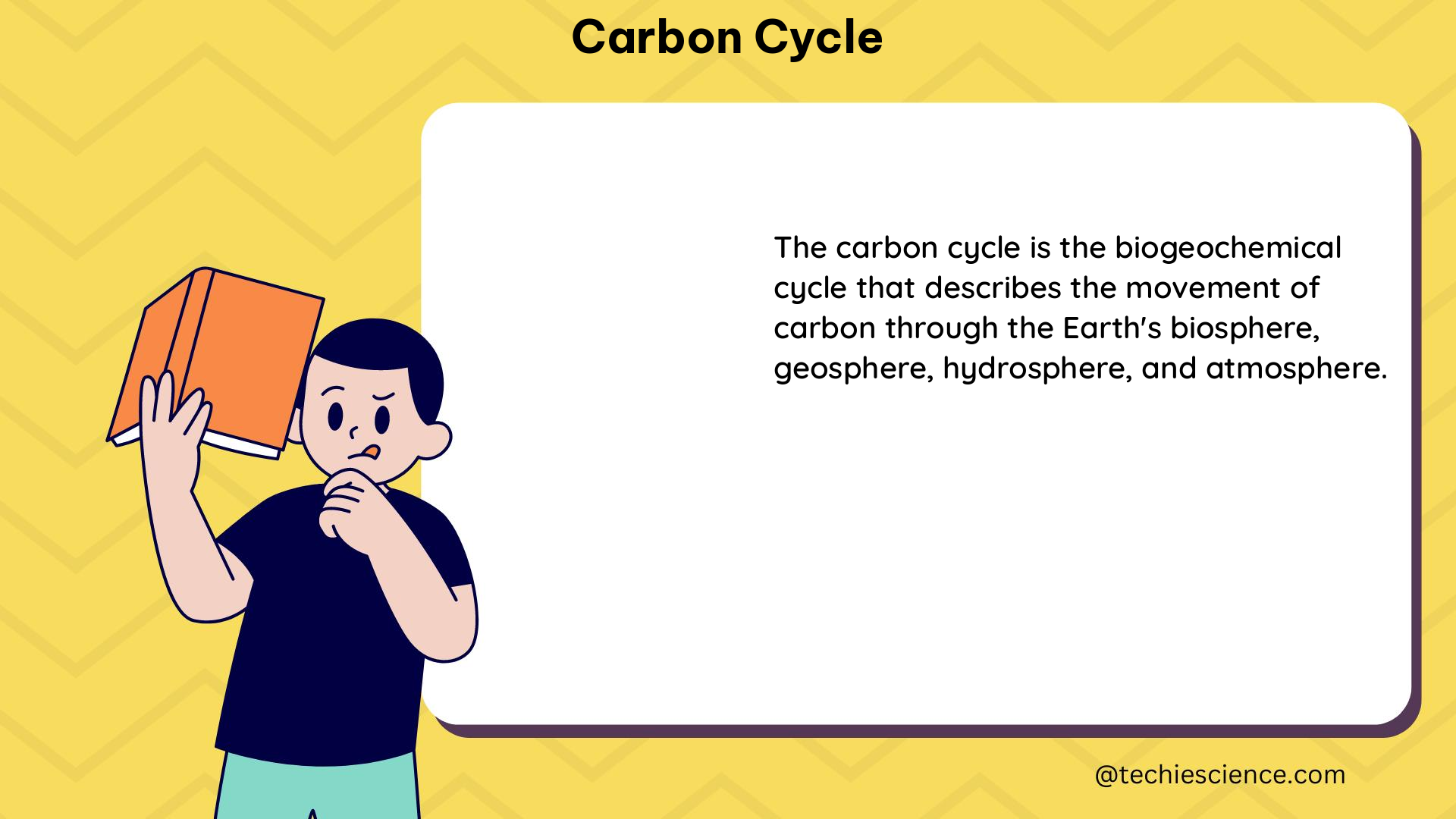The carbon cycle is a complex and dynamic process that governs the movement and transformation of carbon, one of the fundamental building blocks of life, through the Earth’s various systems. This intricate dance of carbon involves the atmosphere, oceans, land, and living organisms, with each component playing a crucial role in maintaining the delicate balance of our planet.
Understanding the Carbon Reservoirs
The Earth’s carbon is primarily stored in several major reservoirs, as outlined by NASA’s Earth Observatory. Approximately 65,500 billion metric tons of carbon are stored in rocks, while the remaining carbon is found in the ocean, atmosphere, plants, soil, and fossil fuels.
These carbon reservoirs are interconnected, and changes in one reservoir can lead to shifts in the others. This dynamic nature of the carbon cycle is what makes it both fascinating and challenging to study.
Atmospheric Carbon
The atmosphere is a crucial component of the carbon cycle, as it serves as a conduit for the exchange of carbon dioxide (CO2) between the Earth’s surface and the upper atmosphere. Atmospheric CO2 concentrations are influenced by various processes, including photosynthesis, respiration, and the burning of fossil fuels.
The concentration of atmospheric CO2 can be measured using various techniques, including satellite data and ice-core analysis. The National Oceanic and Atmospheric Administration (NOAA) Satellite and Information Service maintains comprehensive databases of historical CO2 data, which are essential for understanding the long-term trends and patterns of this greenhouse gas.
Oceanic Carbon
The oceans play a significant role in the carbon cycle, acting as a vast reservoir for carbon. Carbon is present in the oceans in the form of dissolved carbon dioxide and hydrogen carbonate ions (HCO3-). The dissolution of CO2 in water leads to the formation of carbonic acid (H2CO3), which can then dissociate into hydrogen ions (H+) and hydrogen carbonate ions.
This process is crucial for understanding how the oceans can influence the pH of the water, as the presence of hydrogen ions can lead to ocean acidification. Aquatic plants and other autotrophs, such as phytoplankton, utilize the dissolved CO2 and hydrogen carbonate ions to produce carbohydrates and other carbon-based compounds through the process of photosynthesis.
Terrestrial Carbon
The land-based components of the carbon cycle include vegetation, soil, and fossil fuels. Autotrophic organisms, such as plants, absorb atmospheric CO2 and convert it into carbohydrates, lipids, and other carbon-based compounds. This process, known as photosynthesis, effectively removes CO2 from the atmosphere and stores it in the form of organic matter.
The carbon stored in vegetation and soil is then released back into the atmosphere through respiration, decomposition, and the burning of fossil fuels. The delicate balance between carbon uptake and release in terrestrial ecosystems is crucial for maintaining the overall carbon cycle.
Measuring the Carbon Cycle

Accurately measuring the carbon cycle is essential for understanding its dynamics and the impact of human activities on the global climate. NASA plays a crucial role in this endeavor, providing global satellite observations and related field data.
The Moderate Resolution Imaging Spectroradiometer (MODIS) instruments, aboard NASA’s Terra and Aqua satellites, measure the amount of carbon that plants and phytoplankton convert into organic matter through the process of net primary productivity. Additionally, the MODIS sensors track the occurrence and location of fires, which can significantly impact the carbon cycle.
Landsat satellites, another NASA initiative, provide detailed information about the Earth’s surface, including ocean reefs, land cover, and vegetation growth, all of which are essential for understanding the carbon cycle.
The Importance of the Carbon Cycle
The carbon cycle is a fundamental process that sustains life on Earth. It is responsible for the continuous exchange of carbon between the atmosphere, oceans, and terrestrial ecosystems, ensuring the availability of this essential element for the growth and development of living organisms.
Disruptions to the carbon cycle, such as the increased burning of fossil fuels and deforestation, can lead to an imbalance in the global carbon budget, resulting in the accumulation of greenhouse gases in the atmosphere. This, in turn, can contribute to the phenomenon of global climate change, with far-reaching consequences for the planet and its inhabitants.
Understanding the intricacies of the carbon cycle is crucial for developing effective strategies to mitigate the impact of human activities on the environment and maintain the delicate balance of our planet’s ecosystems.
Conclusion
The carbon cycle is a complex and dynamic process that is essential for the continued existence of life on Earth. By understanding the various components of the carbon cycle, including the atmospheric, oceanic, and terrestrial reservoirs, as well as the role of NASA in measuring and monitoring this process, we can gain valuable insights into the delicate balance of our planet’s systems.
Continued research and monitoring of the carbon cycle will be crucial in the years to come, as we strive to address the challenges of global climate change and ensure the long-term sustainability of our planet.
References:
– NASA Earth Observatory: The Carbon Cycle
– MRG Science: The Carbon Cycle
– Carbon Cycle Science: What is the Carbon Cycle?

The lambdageeks.com Core SME Team is a group of experienced subject matter experts from diverse scientific and technical fields including Physics, Chemistry, Technology,Electronics & Electrical Engineering, Automotive, Mechanical Engineering. Our team collaborates to create high-quality, well-researched articles on a wide range of science and technology topics for the lambdageeks.com website.
All Our Senior SME are having more than 7 Years of experience in the respective fields . They are either Working Industry Professionals or assocaited With different Universities. Refer Our Authors Page to get to know About our Core SMEs.